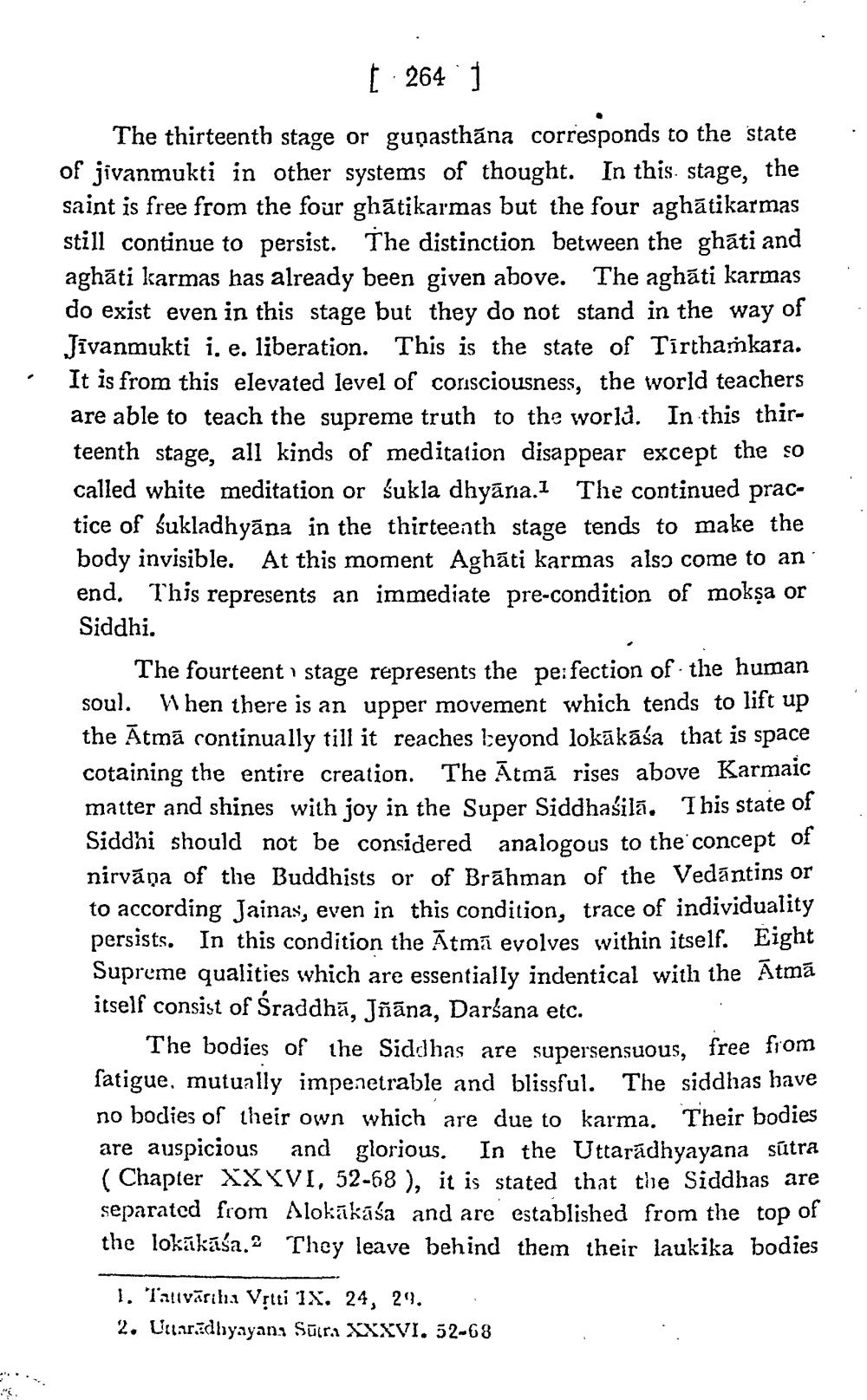________________
[ 264 ) The thirteenth stage or guṇasthāna corresponds to the state of jivanmukti in other systems of thought. In this stage, the saint is free from the four ghātikarmas but the four aghātikarmas still continue to persist. The distinction between the ghāti and aghāti karmas has already been given above. The aghāti karmas do exist even in this stage but they do not stand in the way of Jivanmukti i. e. liberation. This is the state of Tirthamkara. It is from this elevated level of consciousness, the world teachers are able to teach the supreme truth to the world. In this thirteenth stage, all kinds of meditation disappear except the so called white meditation or śukla dhyāna.I The continued practice of sukladhyāna in the thirteenth stage tends to make the body invisible. At this moment Aghāti karmas also come to an end. This represents an immediate pre-condition of moksa or Siddhi.
The fourteent stage represents the perfection of the human soul. When there is an upper movement which tends to lift up the Ātmā continually till it reaches beyond lokākāśa that is space cotaining the entire creation. The Ātmā rises above Karmaic matter and shines with joy in the Super Siddhašilā. This state of Siddhi should not be considered analogous to the concept of nirvāṇa of the Buddhists or of Brāhman of the Vedāntins or to according Jainas, even in this condition, trace of individuality persists. In this condition the Ātmā evolves within itself. Eight Supreme qualities which are essentially indentical with the Atmā itself consist of Sraddhā, Jñāna, Darśana etc.
The bodies of the Siddhas are supersensuous, free from satigue, mutually impenetrable and blissful. The siddhas have no bodies of their own which are due to karma. Their bodies are auspicious and glorious. In the Uttarādhyayana sútra ( Chapter XXXVI, 52-68 ), it is stated that the Siddhas are separated from Alokākāśa and are established from the top of the lokākāśa. They leave behind them their laukika bodies
1. Talvāriha Výtti IX. 24, 29. 2. Uur dhyayans Sutra XXXVI. 52-68




